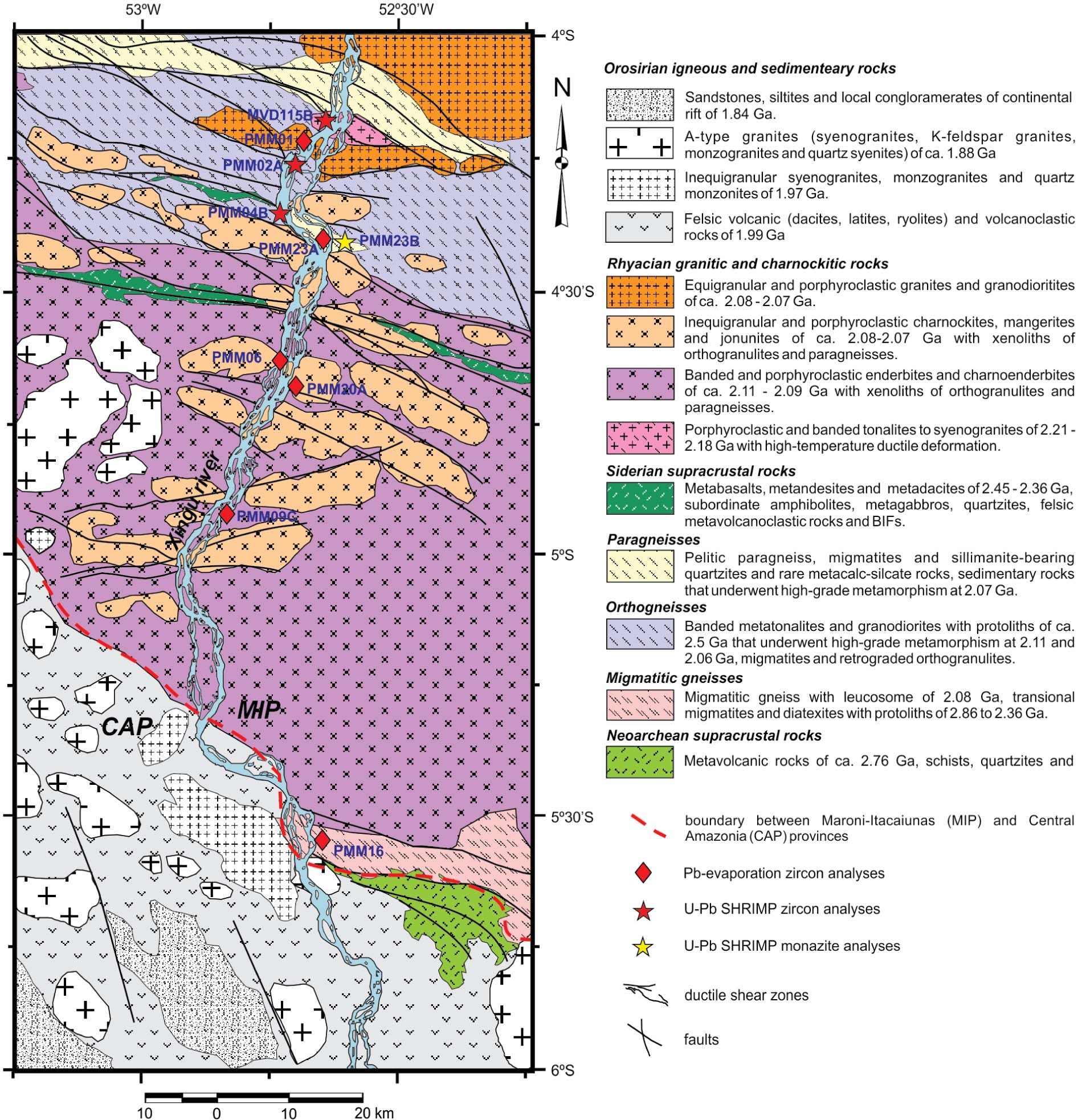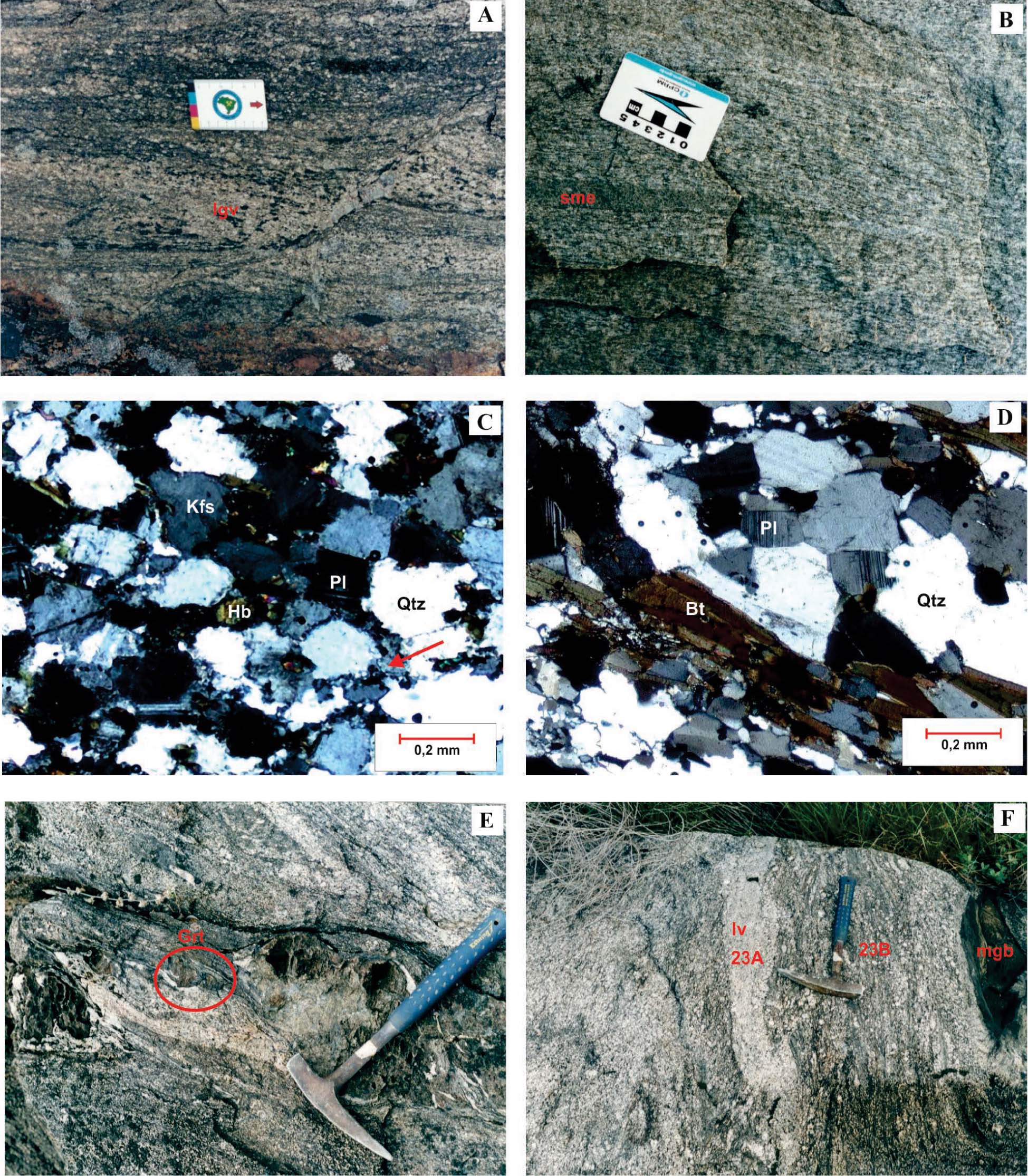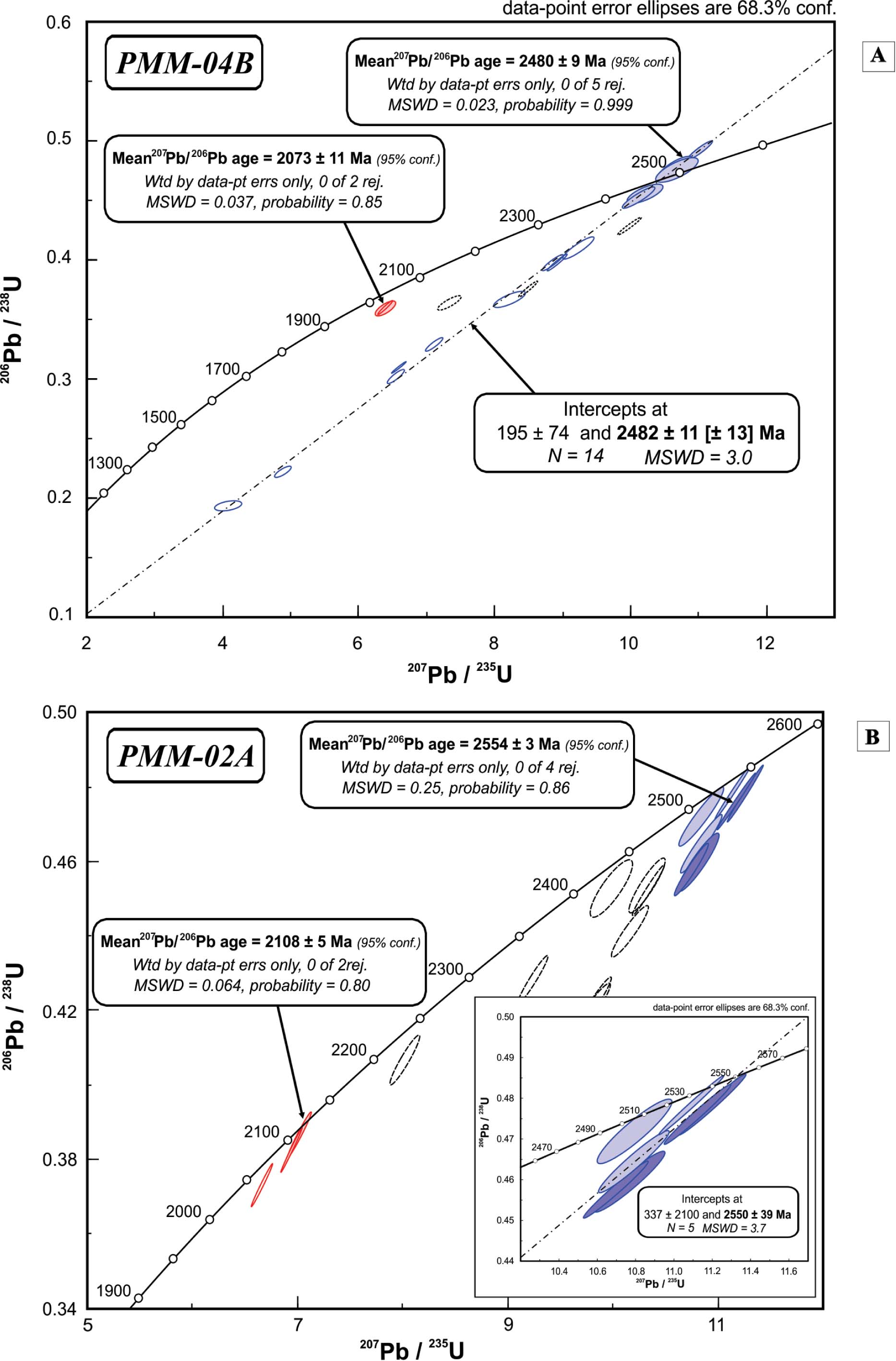Abstract
The Carajás (3.0–2.5 Ga) and Xingu-Iricoumé (1.99–1.86 Ga) blocks comprise the Central Amazonia Province (CAP) that is in contact with the Maroni-Itacaiúnas Province (MIP) within the Amazonian craton. The CAP is the oldest portion (Nd-TDM) of the craton and corresponds to an Archean nucleus bordered by younger Paleo-Mesoproterozoic mobile belts, including the MIP. Because the location and tectonic boundaries between these provinces are insufficiently known, we carried out a geological survey along the Middle Xingu River, cutting the WNW-ESE regional trend, to further understand cratonic evolution of the MIP and its southeastern boundary in this key area. Geochronologic results (Pb-evaporation and U-Pb SHRIMP in zircon and monazite), supported by petrographic and field observations, allowed identification of the following lithotypes and their ages: migmatitic gneisses (2859–2080 Ma), tonalitic gneisses (2554 ± 3 Ma, 2480 ± 9 Ma), enderbites (2114 ± 3 Ma), charnockites (2094 ± 4 Ma, 2084 ± 2 Ma), granodiorites (2079 ± 3 Ma), leucogranitic vein (2075 ± 2 Ma), and pelitic paragneisses (2062 ± 8 Ma). These ages are related to the reworking of Archean crust during Rhyacian magmatic arc amalgamation (2.22–2.13 Ga) and collision in the Transamazonian cycle (ca. 2.1 Ga).
Keywords:
Transamazonian cycle; Maroni-Itacaiúnas Province; Amazonian craton; Zircon and monazite geochronology

 Thumbnail
Thumbnail
 Thumbnail
Thumbnail
 Thumbnail
Thumbnail
 Thumbnail
Thumbnail
 Thumbnail
Thumbnail
 Thumbnail
Thumbnail
 Thumbnail
Thumbnail
 Thumbnail
Thumbnail
 Thumbnail
Thumbnail

 Source: modified from
Source: modified from 





